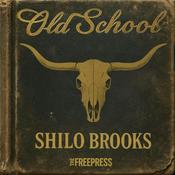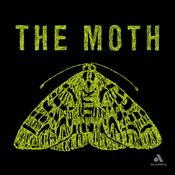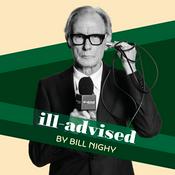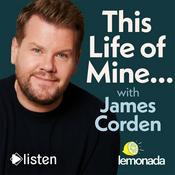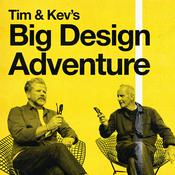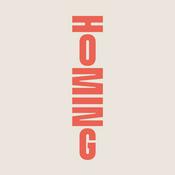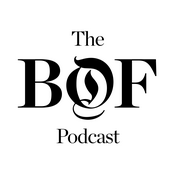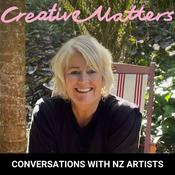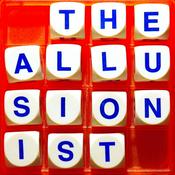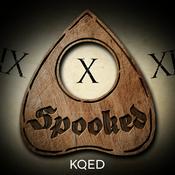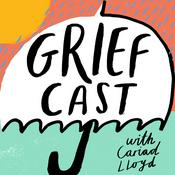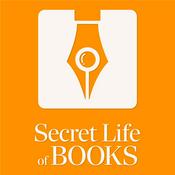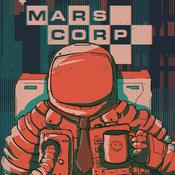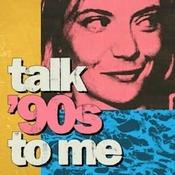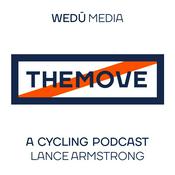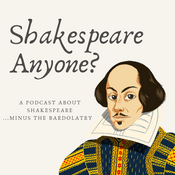Available Episodes
5 of 53
- The Fearless Experiment: Q&A on Unconventional Materials & Artist MindsetWhat if the most exciting art materials aren’t on a shelf, but in a scrap bin behind the shop? We dig into the joy and rigor of working with nontraditional sources—HVAC steel, coroplast misprints, billboard tarps, even feedbags—and how renewable streams of “improper” materials unlock fearless experimentation. That freedom matters because it fuels the process-first mindset we lean on when the work gets messy, slow, or confusing.We also get practical about longevity. If you’re early in your practice, we suggest a different priority: make more work. Let volume accelerate learning, then invest in archival strategies as your voice takes shape. Along the way, we unpack myths around “creative block,” share simple momentum builders, and explain why deadlines—real or self-imposed—can short-circuit perfectionism.The mental game takes center stage too. We talk about protecting focus in dark news cycles, limiting social media’s pull, and treating the studio as a sanctuary for play. On criticism, we separate opinion from fact, consider the source, and extract usable truth without losing our footing. And we explore deeper currents—gratitude as a creative reset, the spiritual feel of making, and the honest cost of time traded for a few rare breakthroughs that make years of work feel worth it.If you’re curious about unconventional materials, archival finishing, handling fear and doubt, and building a resilient creative practice, this conversation will meet you where you are and nudge you forward. Listen, share with a friend who needs momentum, and subscribe so you don’t miss what’s next.Send us a message - we would love to hear from you!Make sure to follow us on Instagram here:@justmakeartpodcast @tynathanclark @nathanterborg Watch the Video Episode on Youtube or Spotify, https://www.youtube.com/@JustMakeArtPodcast--------59:22
- Q&A: Answering your Questions. From Home Studios To Galleries: Real-World Art Career AdviceWe are excited to answer your art questions! In this episode we will discuss: how do you keep your practice thriving while navigating space, money, and access? We dig in with honest, field-tested advice and personal stories from two working artists who’ve built momentum in imperfect conditions.We start with the studio question everyone wrestles with: home vs separate space. You’ll hear why a “setup” beats square footage, how to protect focus if interruptions tank your flow, and scrappy ways to work larger without taking on a lease you can’t sustain. From there, we lay out a gallery game plan: what a strong approach package looks like (10–15 works with depth behind them), what “consistency” really means, and how to get on the radar through open calls, smart social presence, and showing up at the right level.International showing gets a reality check. Culture changes the conversation, but logistics can make or break it. We walk through shipping options, customs surprises, and how to avoid vanity traps with contracts that shift costs onto artists. We also talk residencies, including why many invite-only programs pull from boards and alumni, and how relationships can open doors when applications can’t.Collectors and sustainability round out the heart of the episode. We share favorite delivery stories, why early-stage artists should sell to keep making, and how ideal collectors help build careers over time. For anyone staring down a short financial runway, we offer practical steps: emergency grant resources, low-cost materials that keep you prolific, and the mindset shift that treats bridge income as a patron rather than a detour.If you found value here, follow the show, share it with an artist friend, and leave a review so more creatives can find these conversations. Got a question for part two? Send it our way—your prompts shape the next round.Send us a message - we would love to hear from you!Make sure to follow us on Instagram here:@justmakeartpodcast @tynathanclark @nathanterborg Watch the Video Episode on Youtube or Spotify, https://www.youtube.com/@JustMakeArtPodcast--------51:48
- Why I Make Art. Ursula Von RydingsvardA single question can power a lifetime of work: Why do I make art? Ty and Nathan sit with Ursula Von Rydingsvard’s stark and generous answers—woven from anxiety, labor, faith in process, and the stubborn hope that making can heal—and use it as a mirror for our own practices. From the first splinter to the last pass of the saw, we look at how big work invites big stakes, why the best days feel like discovery, and how the studio becomes a container strong enough to hold whatever we bring into it.We dig into the creative toggle between object and process: when materials feel right but the method frays, and when the method sings but the object won’t land. That friction is feedback, not failure. Ursula’s line about having confidence in the possibility of seeing the work through reframes ambition without guarantees—an artist’s version of resilience. We also talk about self-doubt as a companion rather than an enemy, and how studying our heroes deeply—films, books, museum visits—feeds our own artistic DNA without imitation.There’s a human infrastructure behind monumental art. Ursula’s assistants form another kind of family, proof that leadership in the studio is its own craft. We reflect on daily rhythm, showing up without perfect conditions, and making pieces that may outlive us—which is how work reaches into the future. The conversation edges into generational pain and the unanswerable questions art dares to hold. Answers are rare; presence is everything. If you’ve ever needed permission to trust the process and keep going, consider this your sign.If this resonated, follow the show, share it with a friend who needs a creative nudge, and leave a quick review—tell us your “why” so we can feature it in a future Q&A.Make sure to check out "Art from the Outside" and the amazing interview they had with Ursula: Spotify AppleSend us a message - we would love to hear from you!Make sure to follow us on Instagram here:@justmakeartpodcast @tynathanclark @nathanterborg Watch the Video Episode on Youtube or Spotify, https://www.youtube.com/@JustMakeArtPodcast--------1:11:06
- Make More, Fear Less: on Critique, Confidence, and Choosing Meaning. A Candid Studio Conversation at Poolhaus, Day 2.Coffee, rain, and a table full of half-built ideas set the stage for a candid deep dive into how artists actually move work forward in our second conversation at Poolhaus studio. We trade the comfort of endless polishing for a stubborn rule—get to the next step sooner—and unpack how that one shift stops overworking, preserves strong moments, and helps a real body of work take shape. Along the way, we turn useful decisions into mantras, write them on the wall, and repeat them when stamina dips. The goal isn’t perfection; it’s momentum with intention.We also open the door on critique: how to build a trusted brain trust, weight feedback from mentors versus peers, and curate with clear eyes when your favorite new experiment ranks dead last. Likes are not the art world, and honest notes from people who know your context can be the difference between a scattered show and a resonant one. Confidence matters too—not as posturing, but as fluency in your own language. We talk about answering tough questions from curators, claiming simple choices with conviction, and studying both your work and the person making it.Life intrudes. A recent loss in the recovery community brings the conversation to grief, meaning, and the privilege of making anyway. Borrowing strength from Nick Cave’s reflections on grief as an exalted, remaking state, we choose boldness over hesitation and practice that isn’t conditional on perfect circumstances. Stock your studio with wisdom like winter coats: books, notes, mentors, and sentences that steady you when the weather turns. Then finish the damn thing, explore the dancing sparks, and move to the next with courage and care.If this resonates, follow the show, share it with an artist who needs a nudge, and leave a quick review so more makers can find it. What mantra keeps you moving?Send us a message - we would love to hear from you!Make sure to follow us on Instagram here:@justmakeartpodcast @tynathanclark @nathanterborg Watch the Video Episode on Youtube or Spotify, https://www.youtube.com/@JustMakeArtPodcast--------51:17
- The Art of Breakthrough: A Candid Studio Conversation at PoolhausArtistic breakthroughs don't happen by accident. They emerge from dedicated practice, willingness to fail, and persistence through periods of frustration and doubt. But how do you recognize when you're on the cusp of something transformative versus simply taking another step in your creative journey?Recorded face-to-face at Poolhaus Art Studio in Waco, Texas, this intimate conversation dives deep into the psychology of creative evolution. Both artists share candidly about their current struggles and triumphs, with one revealing a year-long process of private experimentation that's finally beginning to bear fruit. They discuss the delicate balance between methodically refining established techniques and daringly exploring new territories – what one describes as "exploiting the known while exploring the unknown."The discussion reveals powerful strategies for navigating creative uncertainty, including developing systematic approaches to idea management, embracing the cyclical nature of creative development, and maintaining belief in the process even when progress seems elusive. Both artists emphasize the importance of the mantra "the work is taking me somewhere" as a touchstone during difficult periods.Today's artists face unique challenges in the social media age, where the pressure to maintain visibility conflicts with the traditional approach of developing work privately before revealing a cohesive body. The conversation explores finding personal balance, using platforms like Instagram as a "visual journal" without feeling obligated to share finished work prematurely. As Simon de Pury noted, "Instagram will have the same impact on the art market as YouTube had on the music industry" – removing gatekeepers and creating direct connections between artists and audiences.Whether you're struggling to find direction in your practice or contemplating a bold new direction, this episode offers a raw, honest look at the breakthrough process from artists who continue to push their own boundaries. Schedule a studio visit with a fellow artist this week – virtual or in-person – and see where the conversation takes your work.Send us a message - we would love to hear from you!Make sure to follow us on Instagram here:@justmakeartpodcast @tynathanclark @nathanterborg Watch the Video Episode on Youtube or Spotify, https://www.youtube.com/@JustMakeArtPodcast--------58:19
More Arts podcasts
Trending Arts podcasts
About Just Make Art
A conversation about making art and the artist's journey with Ty Nathan Clark and Nathan Terborg, two artists trying to navigate the art world, just like you. In each episode, the duo chooses a quote from a known artist and uses it as a springboard for discussion.Through their conversations, Ty and Nathan explore the deeper meaning of the quote and how it can be applied to the artists studio practice. They share their own personal stories and struggles as artists, and offer practical advice and tips for overcoming obstacles and achieving artistic success.Whether you're a seasoned artist or just starting out, "Just Make Art" provides valuable insights and inspiration to help you navigate the creative process and bring your artistic vision to life. With their engaging and conversational style, Ty and Nathan create a welcoming space for listeners to explore their own artistic passions and learn from two artists working hard to navigate the art world.
Podcast websiteListen to Just Make Art, Dish and many other podcasts from around the world with the radio.net app
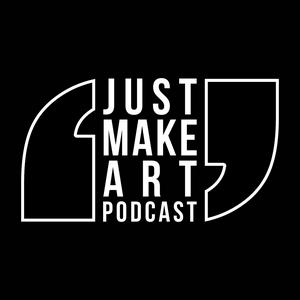
Get the free radio.net app
- Stations and podcasts to bookmark
- Stream via Wi-Fi or Bluetooth
- Supports Carplay & Android Auto
- Many other app features
Get the free radio.net app
- Stations and podcasts to bookmark
- Stream via Wi-Fi or Bluetooth
- Supports Carplay & Android Auto
- Many other app features


Just Make Art
Scan code,
download the app,
start listening.
download the app,
start listening.

